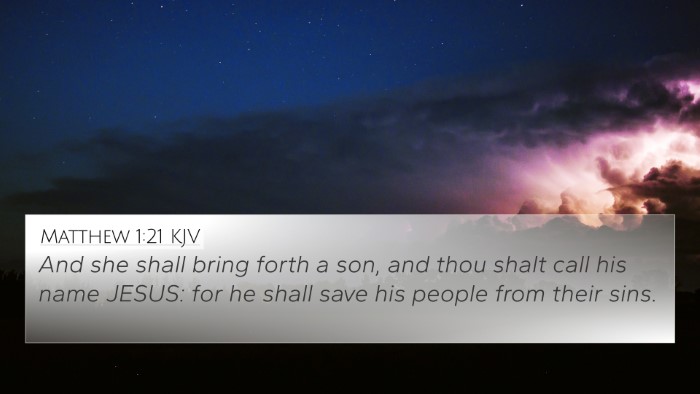This verse encapsulates the mission of Jesus Christ, emphasizing His role as the Savior of humanity. The public domain commentaries provide deeper insight into its significance.
Insights from Public Domain Commentaries
Matthew Henry's Commentary
Matthew Henry highlights that this verse signifies the purpose of Christ's coming into the world. He points out that Jesus, referred to as the "Son of Man," was incarnated to rescue those who are spiritually lost. The term "lost" characterizes those alienated from God, under sin, and in need of salvation. Henry asserts that this divine mission showcases God's love and grace, illustrating that salvation is not just for the righteous but also for sinners.
Albert Barnes' Notes on the Bible
Albert Barnes elaborates on the phrase "seek and to save." He suggests that "seeking" implies a diligent search, showing that Christ actively pursues those who are lost. Barnes underscores that salvation is an all-encompassing act, addressing not only the eternal state of individuals but also their present condition of separation from God. He relates this seeking to the parables of the Lost Sheep and the Prodigal Son, emphasizing God's desire to restore sinners.
Adam Clarke's Commentary
Adam Clarke provides a linguistic analysis of the term "saved," noting its roots in healing and deliverance. He emphasizes that Christ's mission is holistic; it addresses spiritual, emotional, and physical needs of the lost. Clarke also notes that Jesus’ engagement with those society deemed unworthy reveals the inclusive nature of His ministry. This approach invites believers to reflect on their own roles in seeking the lost in their communities.
Cross-References for Luke 19:10
To deepen your understanding of Luke 19:10, here are Bible cross-references that relate closely to its themes:
- Matthew 18:11: "For the Son of Man has come to save that which was lost." - This verse reiterates Jesus' mission, emphasizing His engagement with those in need of salvation.
- John 3:17: "For God did not send His Son into the world to condemn the world, but that the world through Him might be saved." - This highlights the redemptive purpose of Christ's coming.
- Luke 15:4-7: The Parable of the Lost Sheep, illustrating the joy in heaven over a sinner who repents.
- Romans 3:23-24: "For all have sinned and fall short of the glory of God, being justified freely by His grace through the redemption that is in Christ Jesus." - This indicates that all humanity needs salvation, aligning with the notion of being “lost.”
- 1 Timothy 1:15: "This is a faithful saying and worthy of all acceptance, that Christ Jesus came into the world to save sinners, of whom I am chief." - Paul’s acknowledgment that Jesus came for sinners complements Luke 19:10.
- 2 Peter 3:9: "The Lord is not slack concerning His promise, as some count slackness, but is longsuffering toward us, not willing that any should perish but that all should come to repentance." - This conveys God’s heart to seek and save the lost.
- Isaiah 53:6: "All we like sheep have gone astray; we have turned, every one, to his own way." - This verse connects the concept of being lost back to the prophetic tradition, indicating Jesus’ fulfillment of these prophecies.
Conclusion
In conclusion, Luke 19:10 encapsulates the essence of Jesus Christ's mission to seek and save the lost, a theme that resonates throughout the Bible. The insights gathered from commentaries and cross-referenced verses provide a comprehensive understanding of the depth of this scripture. Through understanding these connections, one can appreciate the overarching narrative of salvation that pervades the entire biblical text.
For further study, consider tools for Bible cross-referencing, such as a Bible concordance or a cross-reference guide, which can enhance your journey in identifying relationships between scripture passages and themes.















